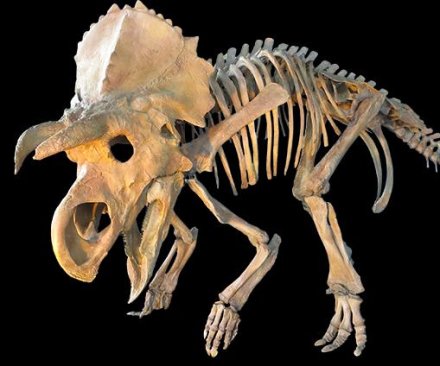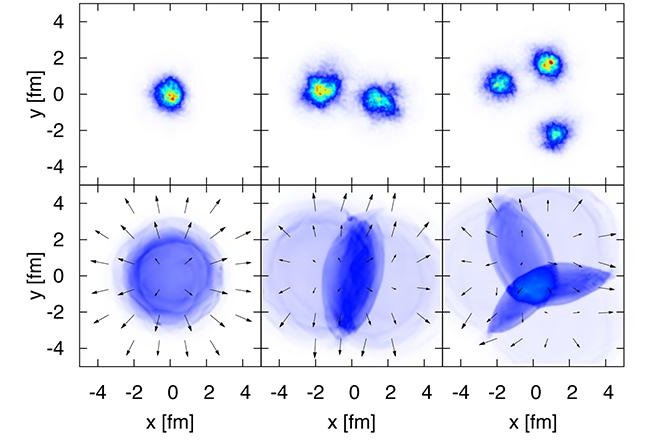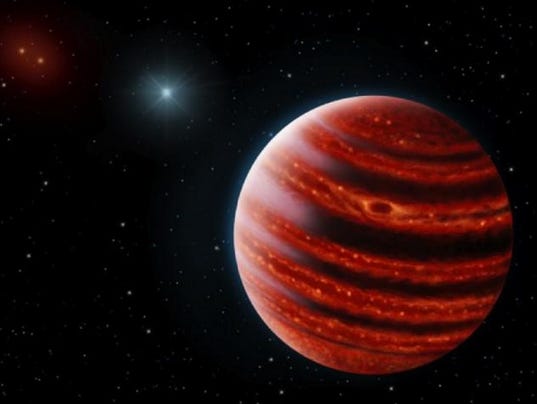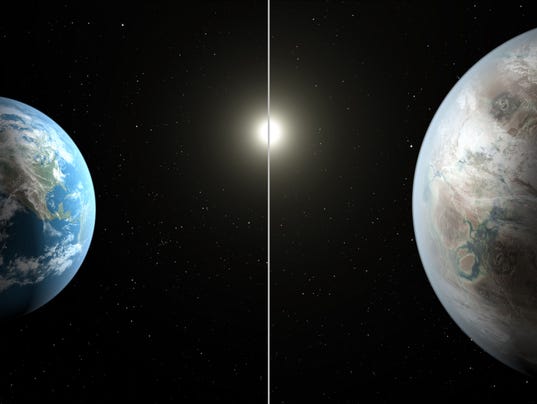 A team of Colorado researchers say there's nothing else like the dinosaur specimen they unearthed. Though it's yet to be given a scientific name, scientists dubbed the dino "Ava," due to its resemblance of triceratops relative Avaceratops.
A team of Colorado researchers say there's nothing else like the dinosaur specimen they unearthed. Though it's yet to be given a scientific name, scientists dubbed the dino "Ava," due to its resemblance of triceratops relative Avaceratops.
The dinosaur's fossils were discovered at the Judith River Formation in Montana. They're dated at 75 million years old, placing the dino's heyday within the Campanian stage of the Late Cretaceous.
Mini triceratops-like dinosaur could be new species
Scientists ‘Reeling’ From New Pluto Pics
 As celestial bodies go, Pluto is far more surprising than anyone could have expected.
As celestial bodies go, Pluto is far more surprising than anyone could have expected.
“Pluto is showing us a diversity of landforms and complexity of processes that rival anything we’ve seen in the solar system,” said New Horizons Principal Investigator Alan Stern, of the Southwest Research Institute (SwRI) in Boulder, Colorado, in the official Nasa announcement that also claimed scientists were ‘reeling’ from seeing the new pictures.
Bones in South African cave reveal new human relative
 Scientists say they've discovered a new member of the human family tree, revealed by a huge trove of bones in a barely accessible, pitch-dark chamber of a cave in South Africa.
Scientists say they've discovered a new member of the human family tree, revealed by a huge trove of bones in a barely accessible, pitch-dark chamber of a cave in South Africa.
The creature shows a surprising mix of human-like and more primitive characteristics — some experts called it "bizarre" and "weird."
And the discovery presents some key mysteries: How old are the bones? And how did they get into that chamber, reachable only by a complicated pathway that includes squeezing through passages as narrow as about 7½ inches (17.8 centimeters)?
Hypervelocity stars travel across the Universe, perhaps with aliens in tow
The stillness of the night sky is deceiving. Because of the sheer vastness of space, stars appear unmoving like celestial fixtures. In actuality, though, they're zipping through the cosmos - some at ridiculously high speeds: thousands, and even tens of thousands of kilometres per second.
That's roughly 100,000 times faster than the speediest train and 1,000 times faster than the fastest spacecraft that's ever flown. That's fast enough for a few spins around Earth in the time it takes to put on your socks. The point is, that's fast.
Ion collider produces droplets of primordial goo
 he Relativistic Heavy Ion Collider just spit out tiny droplets of a liquid researchers say resembles the seeds of the cosmos, a primordial goo created by the Big Bang, which existed only briefly before cooling into the matter that helped birth stars, galaxies and planets.
he Relativistic Heavy Ion Collider just spit out tiny droplets of a liquid researchers say resembles the seeds of the cosmos, a primordial goo created by the Big Bang, which existed only briefly before cooling into the matter that helped birth stars, galaxies and planets.
Scientists have reported seeing the tiny liquid droplets before, but this time, researchers got a better look at the production process.
Astronomers spot 20 million year young, 'Jupiter-like' planet
 Astronomers have spotted a Jupiter-like planet that could hold the answer to how our solar system was formed.
Astronomers have spotted a Jupiter-like planet that could hold the answer to how our solar system was formed.
The planet 51 Eridani b is roughly twice the size of Jupiter and young by planetary standards, at 20 million years old. At 800 degrees Fahrenheit, the planet's surface is still glowing with heat from its creation and offers clues about how it was formed, according to a study published in the journal Science on Thursday.
NASA's Kepler spacecraft spots planet 'somebody else might call home'
 Scientists have spotted a planet much the same size as our Earth orbiting a star that closely resembles our sun, making this new world the most likely known place outside our solar system to harbor life.
Scientists have spotted a planet much the same size as our Earth orbiting a star that closely resembles our sun, making this new world the most likely known place outside our solar system to harbor life.
The newfound planet, referred to as Kepler-452b, “is the closest thing we have to another place that somebody else might call home,” Jon Jenkins of NASA’s Ames Research Center told reporters Thursday. The planet has been at just the right temperature to boast liquid water for some 6 billion years, “a considerable time and opportunity for life to arise somewhere on its surface or in its oceans,” assuming the place has all the necessary ingredients for life, Jenkins said.
More Articles...
Page 11 of 61

 Science Glance
Science Glance






























